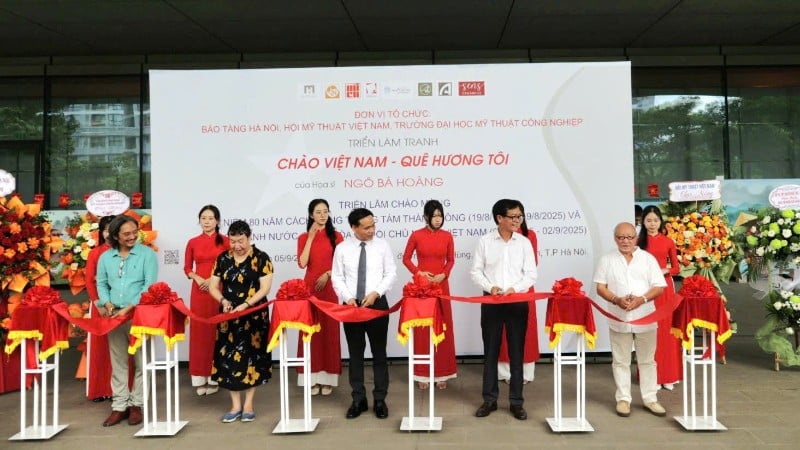
The exhibition "Hello Vietnam - My Homeland" introduces 63 paintings expressing deep gratitude to the homeland and country, while also honoring the unique cultural values, fine traditions, nature and people of Vietnam throughout the nation's historical journey.
Each work has brought the authentic and vivid beauty of each land stretching from Lung Cu flagpole (old Ha Giang ) to Ca Mau Cape, forming a panoramic picture of Vietnam, expressed with a realistic style combined with the typical techniques of monumental painting such as continuity, simultaneous appearance and spatial convention.
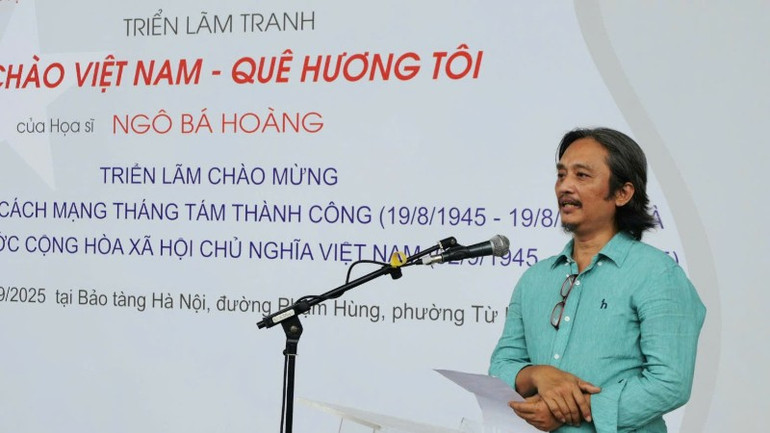
Painter Ngo Ba Hoang shared: "With this series of paintings, I hope that every Vietnamese person, especially the young generation, will understand, love and be proud of their homeland and country more. At the same time, I also hope that the art of monumental painting, the field that we are teaching and developing, will be widely accepted and loved by the public."
This is a passionate art project of artist Ngo Ba Hoang, a lecturer specializing in monumental painting at the University of Industrial Fine Arts.

Previously, in 2020, the artist created the painting "Vietnam - Brocade Mountains and Rivers" (3.3m high, 12m long), currently on display at the headquarters of Geleximco Group, creating the premise of materials and inspiration for the creation of this set of 63 paintings.
With a vivid realistic style, artist Ngo Ba Hoang praised the beauty of the country stretching from north to south, expressing love and pride for the homeland, country, people and culture of the Vietnamese ethnic groups through a work of great stature.
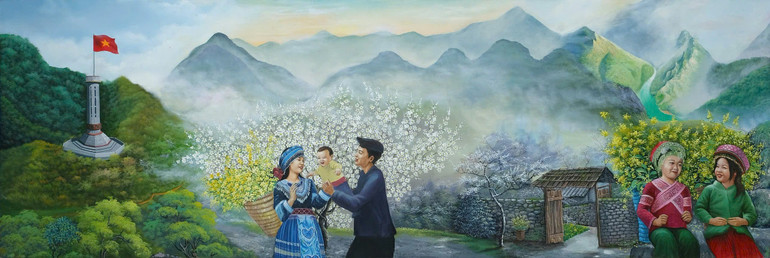
The series of paintings includes 63 paintings with a total length of more than 300m, expressed in acrylic color on canvas. Each painting is 1.8m; 1.4m high. In 2024, artist Ngo Ba Hoang began sketching the painting "Hello Vietnam - My Homeland" and together with more than 40 collaborators, artists and students majoring in monumental painting (University of Industrial Fine Arts) embarked on an inspiring artistic journey, expressing this series of paintings on large canvas with acrylic color.
With a height of 1.8m and a total length of more than 300m, the painting is like a long silk strip depicting the image of the Vietnamese homeland from Lung Cu-Ha Giang to Ca Mau Cape. The majestic natural beauty blends into the cultural identity and people of Vietnam through each region of the country.

The series of paintings opens a journey along the length of the beloved S-shaped strip of land, starting from Lung Cu Flagpole, where "heaven and earth meet". The Northwest landscape appears hazy and poetic with white plum blossom forests, the majestic Hoang Lien Son mountain range and golden terraced fields shining in the morning sun.
In that space, H'Mong girls shine brightly in colorful brocade dresses, their smiles shining as bright as the colors embroidered on their costumes. A young couple and their baby appear happy, amidst the peaceful scenery of the winding Nho Que River, stone walls, ancient wooden gates and children carrying yellow mustard flowers on their backs.
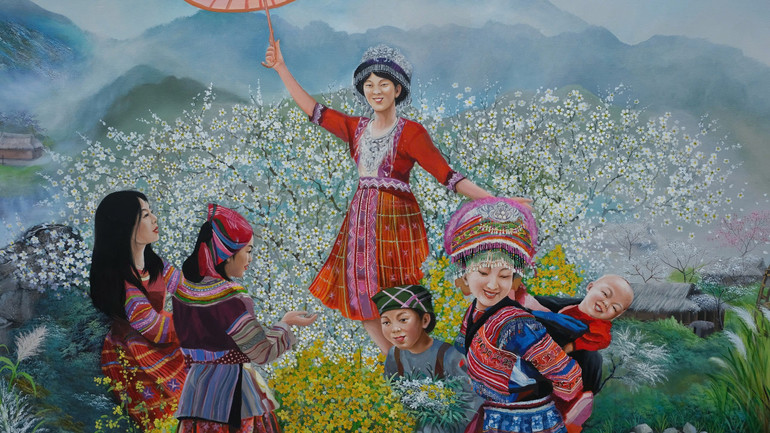
The scenery continues with the Ha Giang stone plateau, Ma Pi Leng peak, water wheels spinning by the stream, and Thai girls happily in the golden rice fields. In the distance, the stilt house roof emits smoke from its kitchen, blending with the clouds and mountains, evoking the warmth of highland life.
In Dien Bien , the Ban flower festival is bustling with girls dancing with fans under the canopy of white Ban trees in the forest. The young girls are radiant in traditional costumes, the silver light sparkling under the Muong Hoa valley, looming in the distance is Fansipan peak. The image of Lu ethnic girls playing and chatting in the vast space of the mountains and forests is like a bright song about youth, nature and humanity in the mountainous region.

Continuing the journey is the vast Northeast region, with lakes as calm as mirrors, reflecting the overlapping mountains and echoing the sound of streams and waterfalls combined with the melodies of gongs and đàn tính in the great forest. The Hair Washing Festival appears innocent and romantic, with the image of young girls with long hair reaching their heels, freely letting their hair down in the clear stream, in the distance are white waterfalls, soft as silk.
The gong dance of Muong girls takes us to the vast and majestic Song Da hydroelectric lake. The gentle Lu girl dances with a conical hat, two Tay girls passionately play the Tinh lute beside the white foam of Ban Gioc waterfall. On the blue surface of Na Hang lake, a small boat glides gently, carrying ethnic girls as if floating in a watercolor painting, reflecting the distant clouds and mountains.
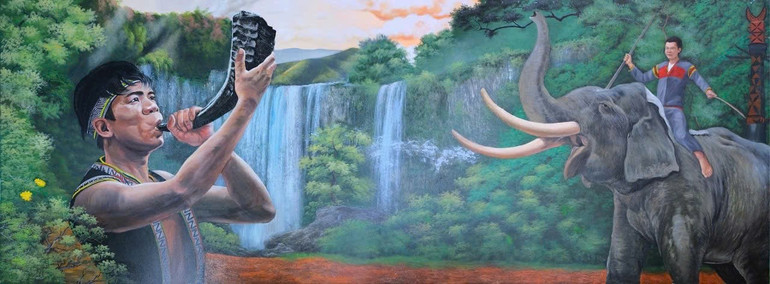
The Northern Delta opens with the sacred scenery of Yen Tu, where Dong Pagoda is located on the top of the mountain and the majestic statue of Buddha King Tran Nhan Tong looks out towards Ha Long, a precious gem given by heaven, with thousands of majestic rocky islands, recognized by UNESCO as a world natural heritage.
From there, the gentle flow of paintings moves to Hai Phong - the Red Flamboyant City, vividly appearing with a modern port, bustling ships, and the breath of a bustling industrial sea. The scenery continues with Yen Stream - Huong Pagoda, then One Pillar Pagoda, Khue Van Cac, Ngoc Son Temple, The Huc Bridge, the National Assembly Building... appearing as bright spots in the identity of Thang Long - Hanoi.

Images of Hanoi girls in white ao dai, cyclos carrying autumn through the old town, calligraphers writing calligraphy, girls next to Nhat Tan peach blossoms, Long Bien Bridge, the Red River... all create a portrait of a thousand-year-old capital, both ancient and modern, full of poetry and nostalgia.
The melodies of Bac Ninh Quan Ho, excerpts of ancient Cheo in the Keo pagoda yard, the sound of the shepherd's flute echoing to the rhythm of the boat procession in the middle of the golden rice fields, bring the audience back to Trang An, Tam Chuc, then back to Pho Hien-Hung Yen, where the saying "First is the Capital, second is Pho Hien" is recorded. A Northern Delta appears gentle, rich and imbued with traditional cultural identity, where the thousand-year-old spirit and Vietnamese soul converge.

The beloved Central region begins with images of Lam Kinh, Ho Dynasty Citadel, Ham Rong Bridge, the outstanding historical landmarks of Thanh Hoa, a land of talented people, the birthplace of many national heroes. From there, the painting takes us along the Truong Son mountain range, along the long white sand coast, to visit Uncle Ho's hometown Sen village, where President Ho Chi Minh spent his childhood, and admire the statue of beloved Uncle Ho, located in the center of Vinh city.
Next is Phong Nha-Ke Bang, a majestic natural cave complex, where international tourists are fascinated to explore the wild beauty of rocks, water and light, a world natural heritage in the heart of Quang Binh. The series of paintings continues through touching images: a small boat quietly leaves Quang Tri Citadel, drifting down the Thach Han River, carrying memories of war and peace...
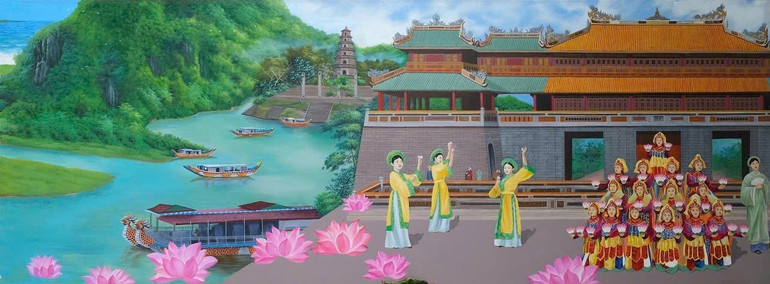
And there are so many landscapes, people, and cultures for viewers to discover in each brushstroke. "Hello Vietnam - My Homeland" is a cultural journey, connecting the Vietnamese soul through each color, each line, each emotional scene.
The paintings are presented in a realistic, vivid, clear, familiar and easy-to-feel style; the colors are bright, truly reflecting the characteristics of each locality. The paintings use a continuous composition technique, linking the beautiful landscapes of the homeland in a flexible and rhythmic manner from North to South, carrying a sacred message: love for the homeland, national pride, arousing in each person the desire to explore and preserve the beauty of Vietnam.
This exhibition is organized with the support of Hanoi Museum, Vietnam Fine Arts Association, University of Industrial Fine Arts and in collaboration with Hanoi Creative Activities Coordination Center.
Source: https://nhandan.vn/trien-lam-tranh-chao-viet-nam-que-huong-toi-cua-hoa-si-ngo-ba-hoang-post903012.html



![[Photo] General Secretary To Lam attends the 80th Anniversary of the Cultural Sector's Traditional Day](https://vphoto.vietnam.vn/thumb/1200x675/vietnam/resource/IMAGE/2025/8/23/7a88e6b58502490aa153adf8f0eec2b2)
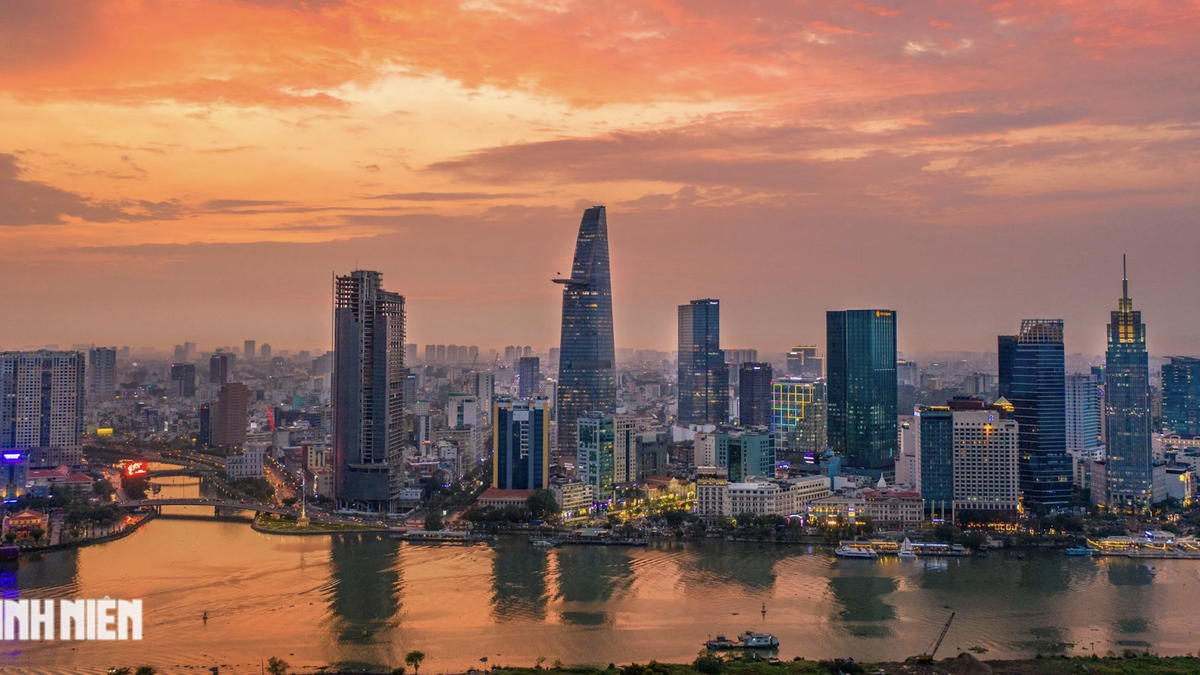
![[Photo] Prime Minister Pham Minh Chinh chairs the meeting of the Government Party Committee Standing Committee](https://vphoto.vietnam.vn/thumb/1200x675/vietnam/resource/IMAGE/2025/8/23/8e94aa3d26424d1ab1528c3e4bbacc45)
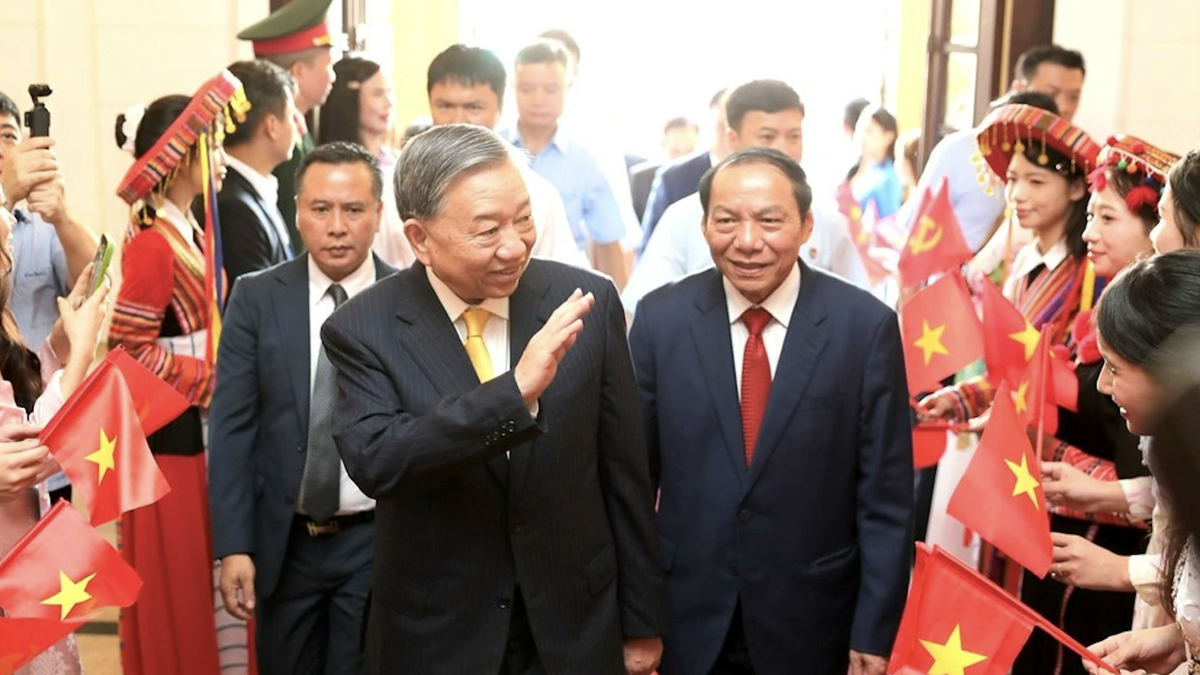
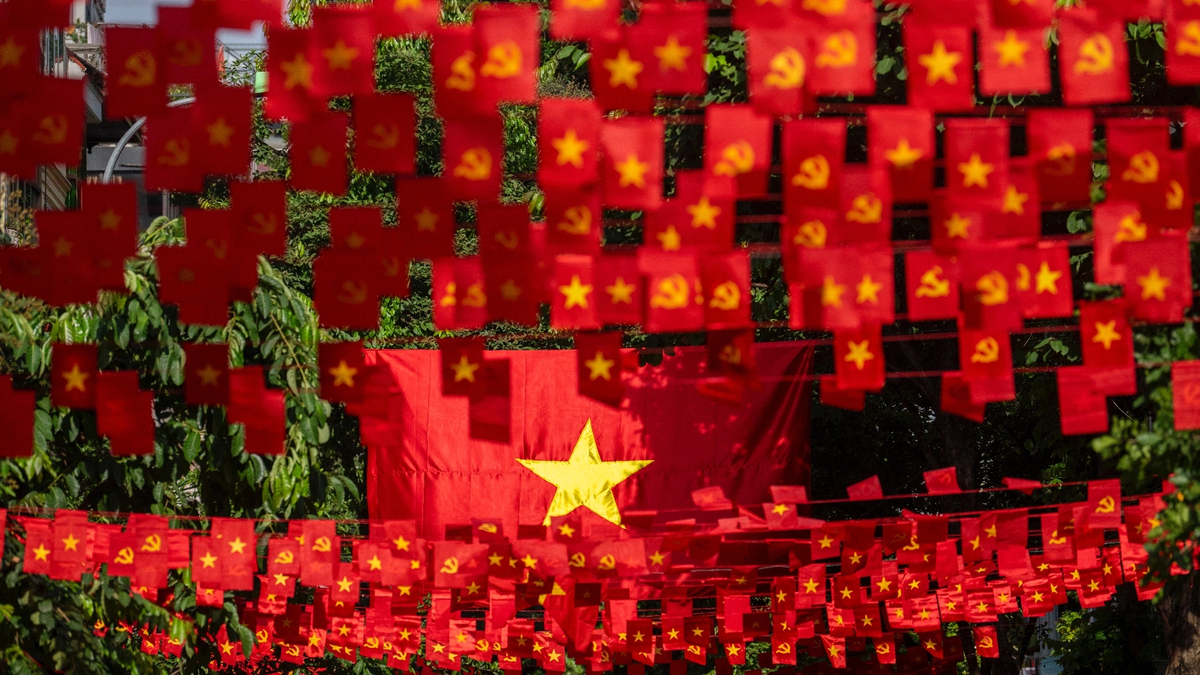
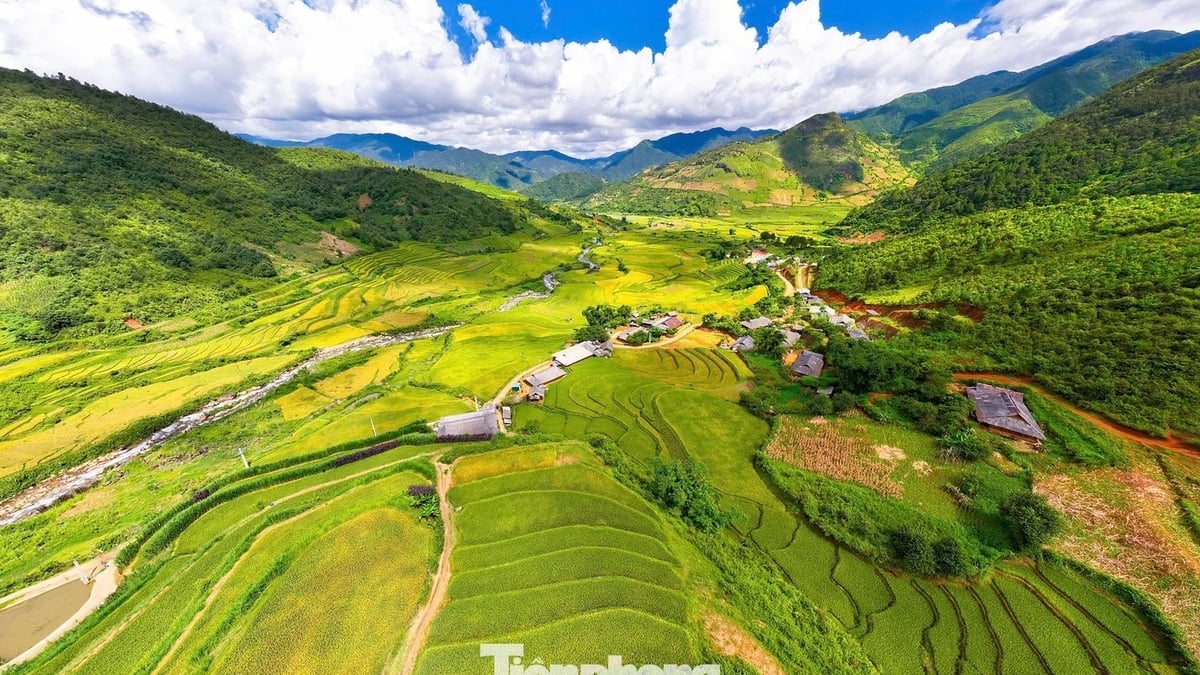
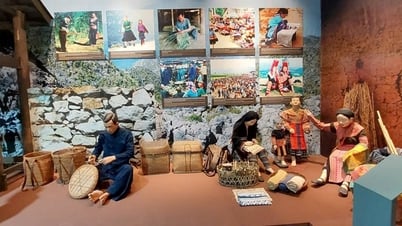



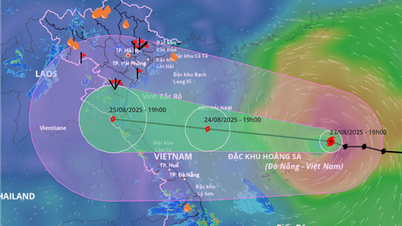
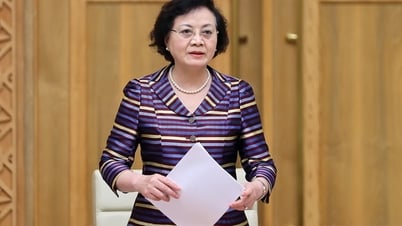

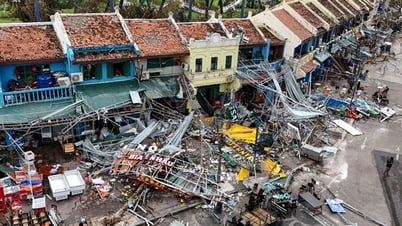






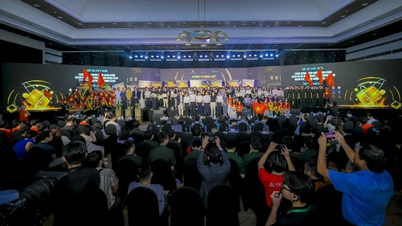
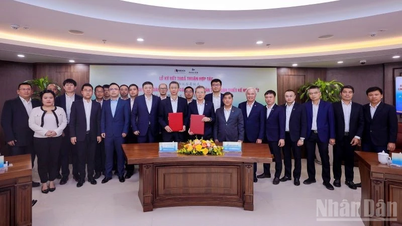
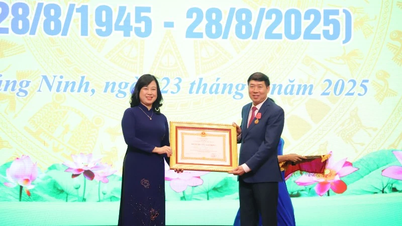
![[Photo] Prime Minister Pham Minh Chinh chairs the meeting of the Government Party Committee Standing Committee](https://vphoto.vietnam.vn/thumb/402x226/vietnam/resource/IMAGE/2025/8/23/8e94aa3d26424d1ab1528c3e4bbacc45)
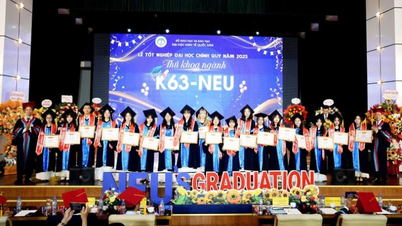
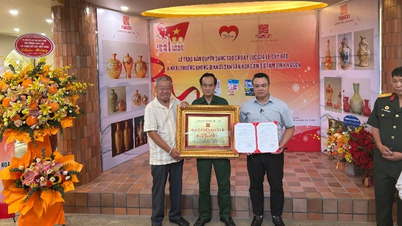
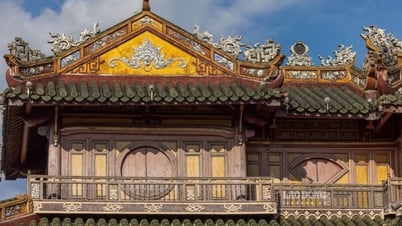

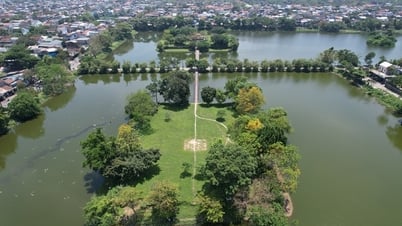

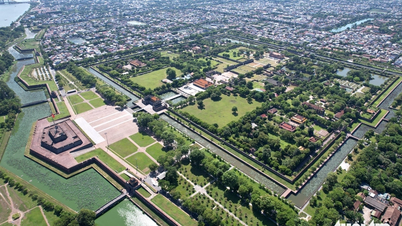
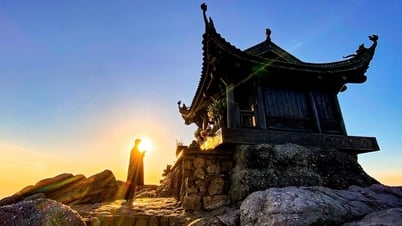

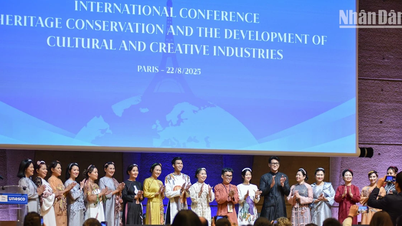


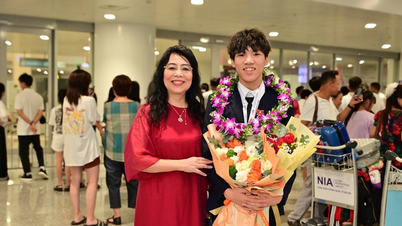






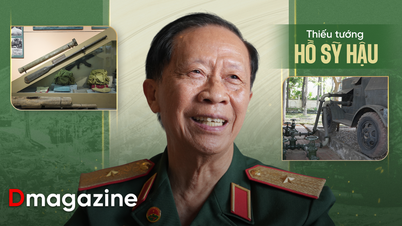











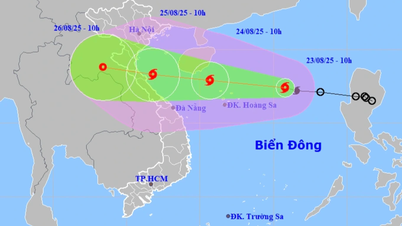


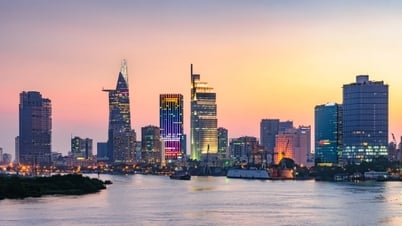




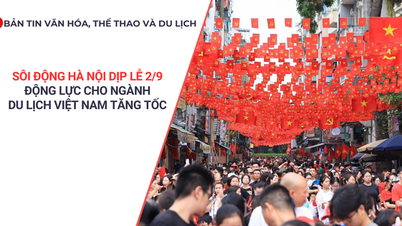

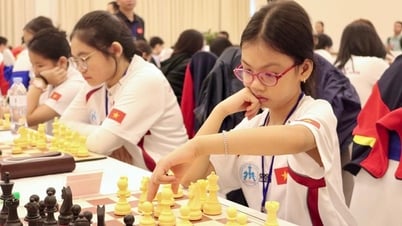
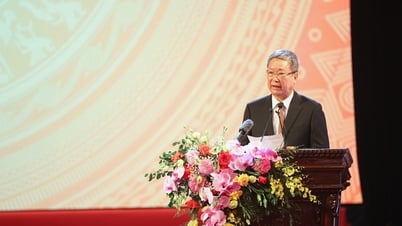


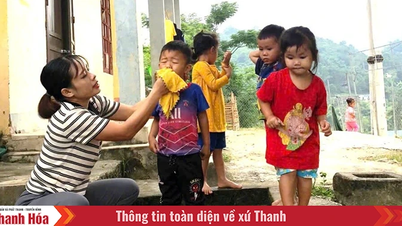

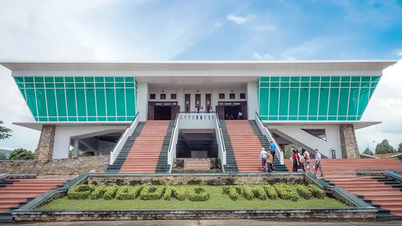

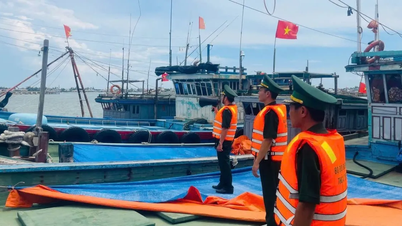

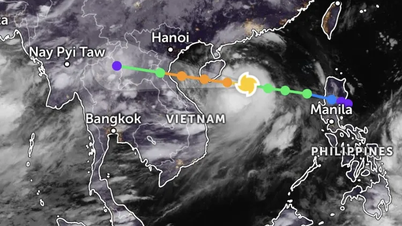


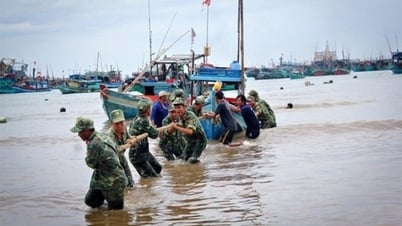

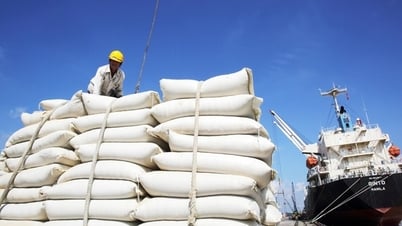


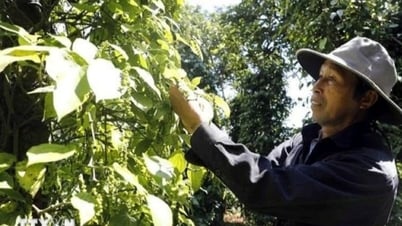


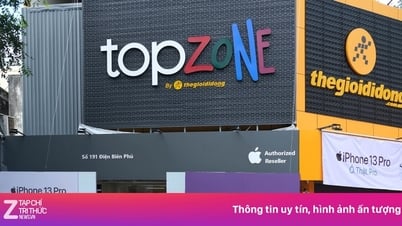


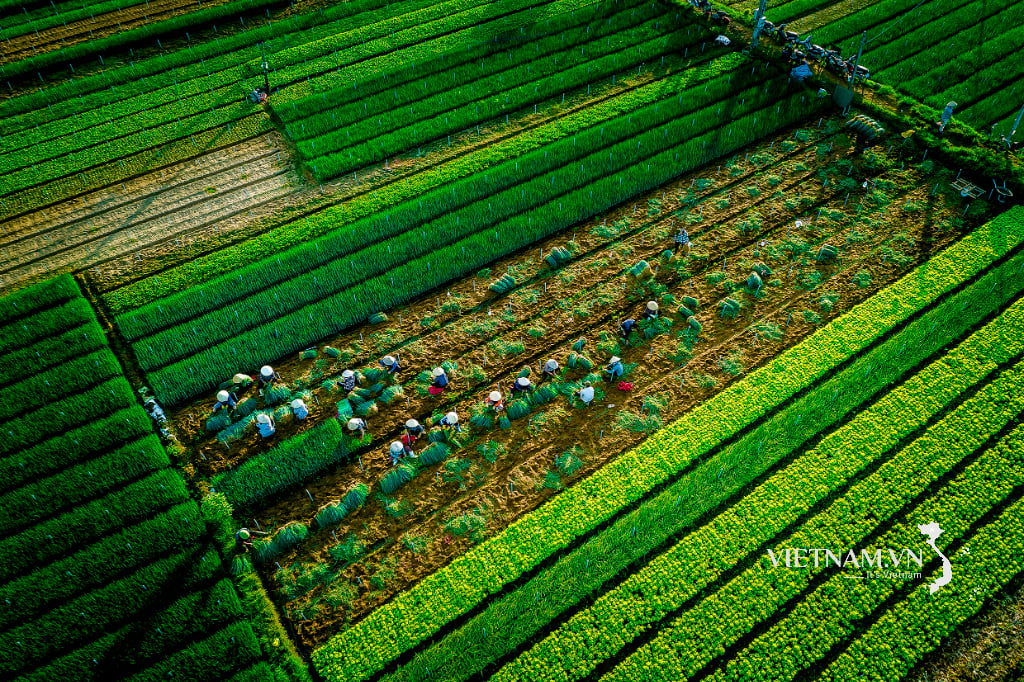
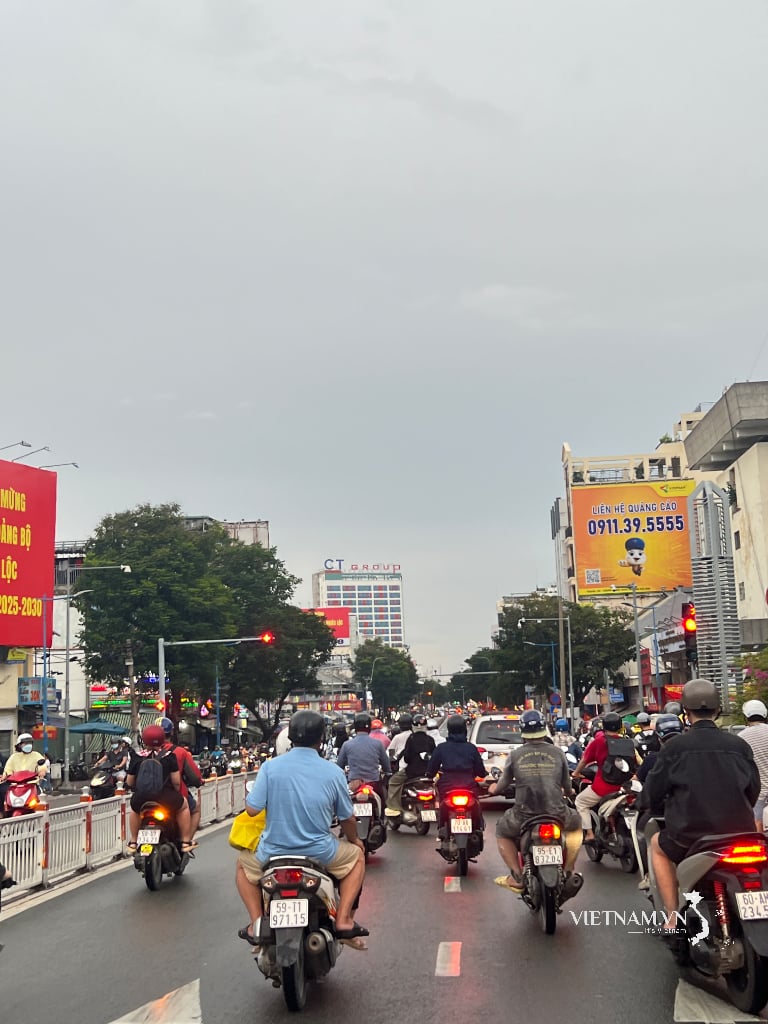

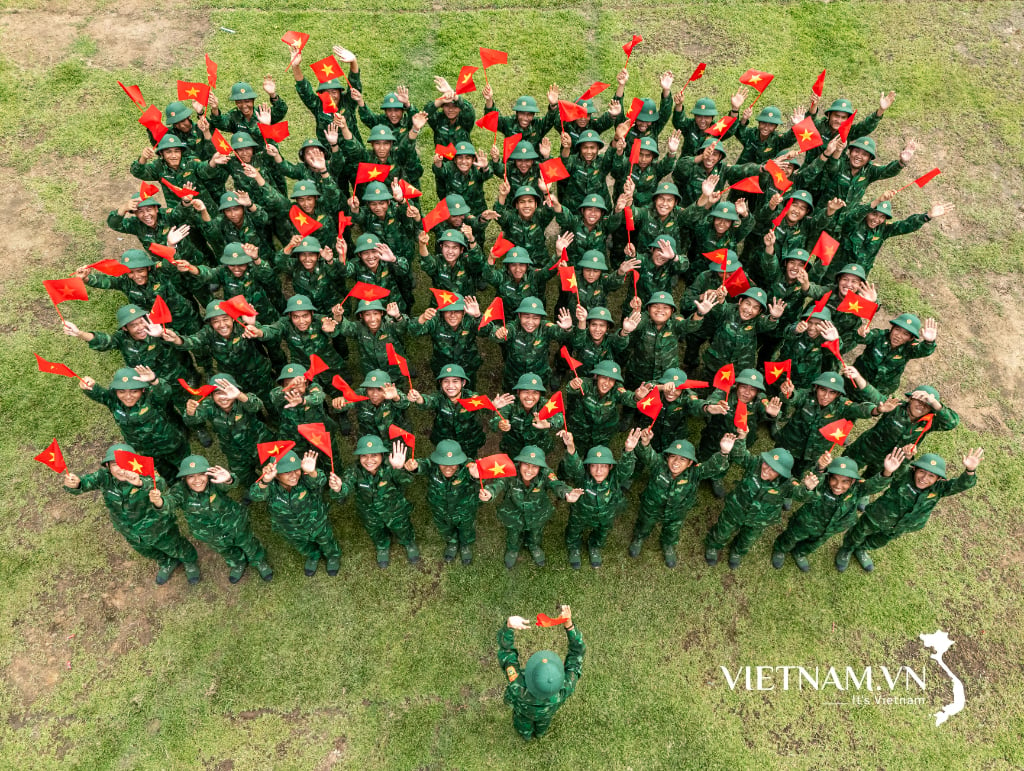
Comment (0)